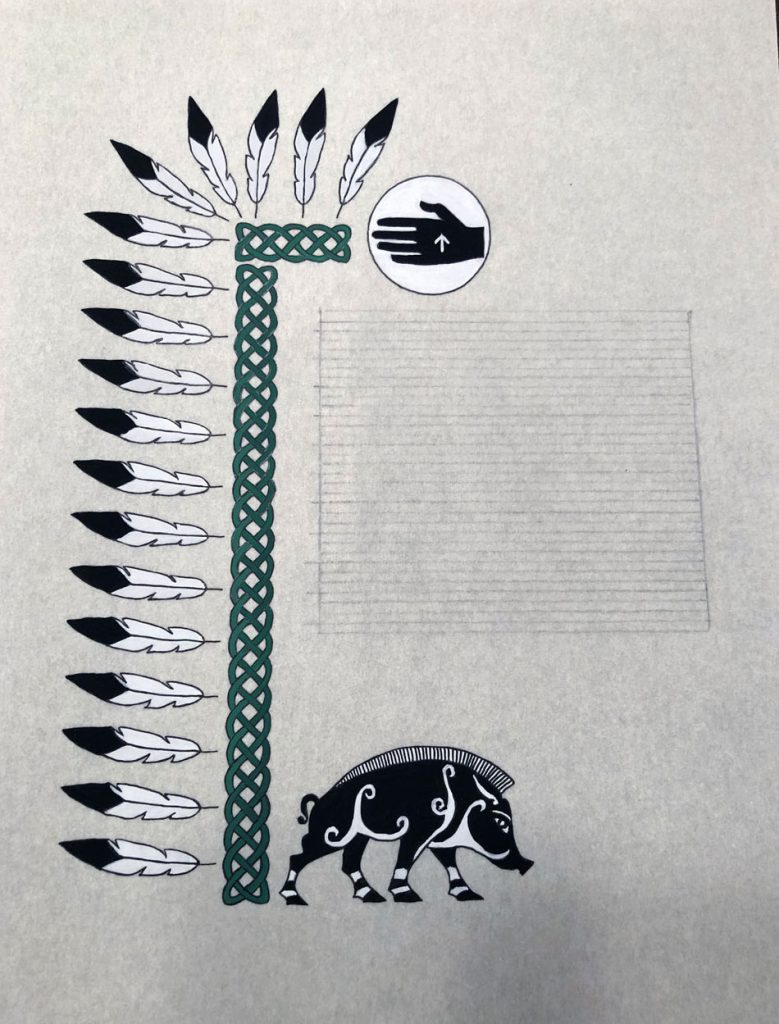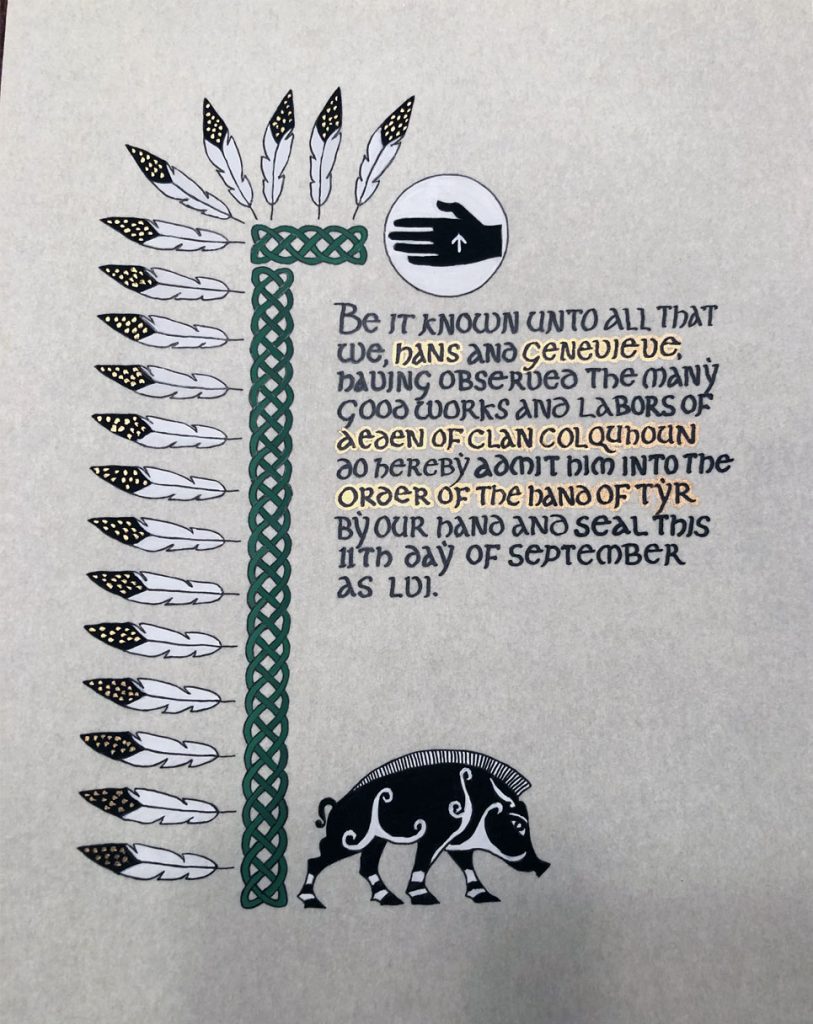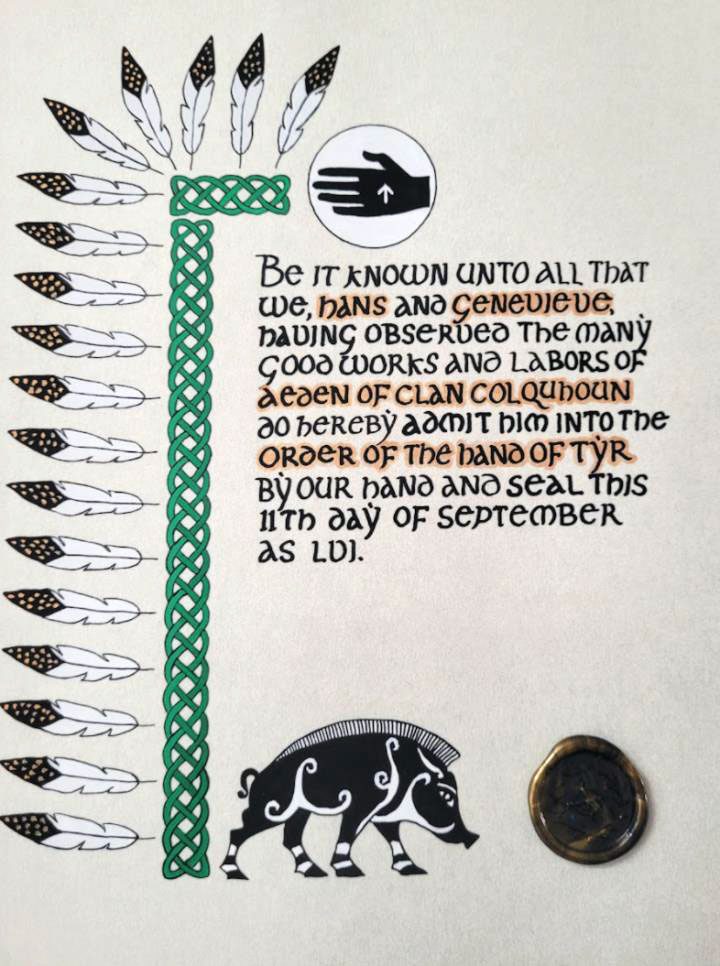Having previously seen the wonders of pergamenata and finally acquired some of my very own, this was my first full scroll using it. The recipient started in the SCA as a 14th century Scottish highlander and was working on a 16th century Polish Hussar persona. Their device included a brown boar over a green and white background. Taking those elements, I decided to bridge the two personas and incorporate elements of the device in the scroll. I found several images of a Pictish boar online and Hussars wore wings as part of their battle gear. Replacing the frame for the feathers with Celtic knot work was the final joining element. Laying it all out to give the suggestion that the boar is the Hussar wearing the wings, I printed it off and took it to the light table.
One of the great benefits of the light table was that it allowed me to go straight to inking the outlines for the illumination areas without having to pencil them first, which was a big time saver. The recent acquisition of a circles template to my toolbox aided in making a perfect circle for the award badge.
I pulled green from the recipient’s device for the knot work. I had planned to do the boar in brown, but forgot in the excitement of painting and, in the end, I think the black and white boar and overall limited color palate looks really sharp.
For the calligraphy, finally, at long last, a new hand! I used Artificial Uncial (sixth to tenth century). As an added bonus, I also used a dip pen for the first time instead of cartridge ink. You can see the slight unevenness of the weight of the lines just after the pen is dipped, but it still came out legible because I also reduced the number of words so I could write the letters bigger. Gold paint over the feathers and around the names of people and the award were the final touches.
Materials: Printer, light table, 8″x10″ pergamenata, ruler, pencil, eraser, Ames lettering guide, circles template, micron pen, Speedball Super Black ink, dip pen, gouache, gold paint





